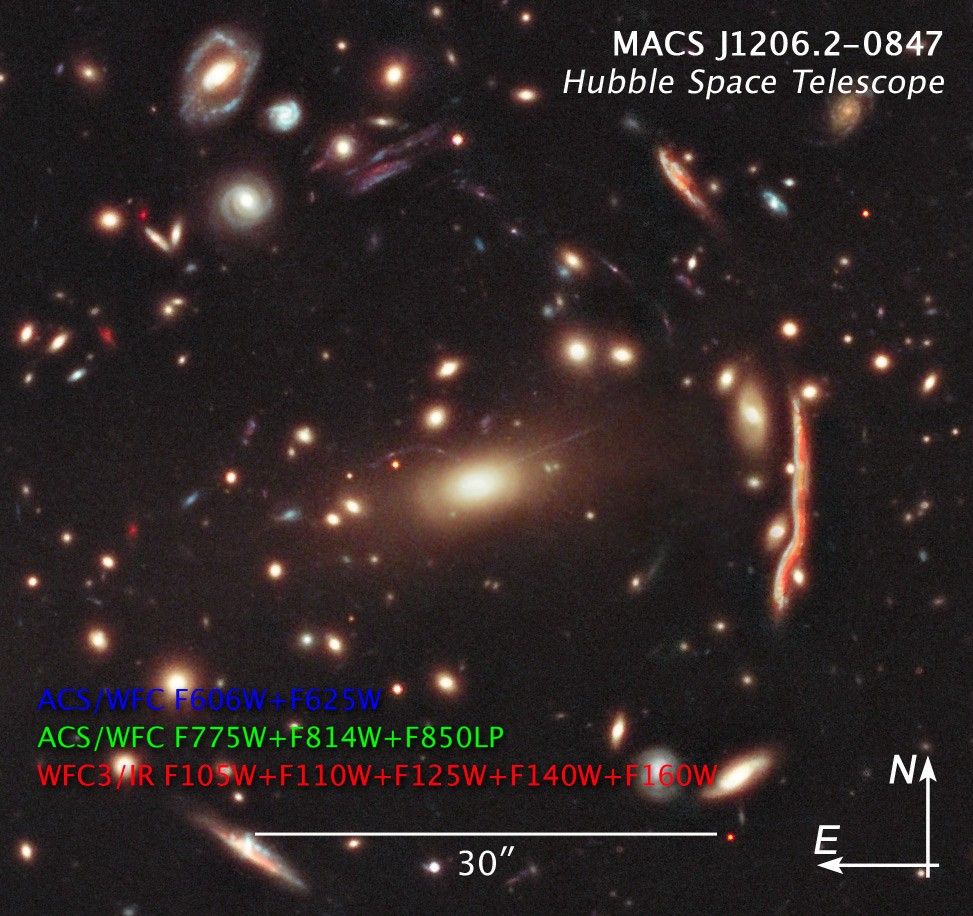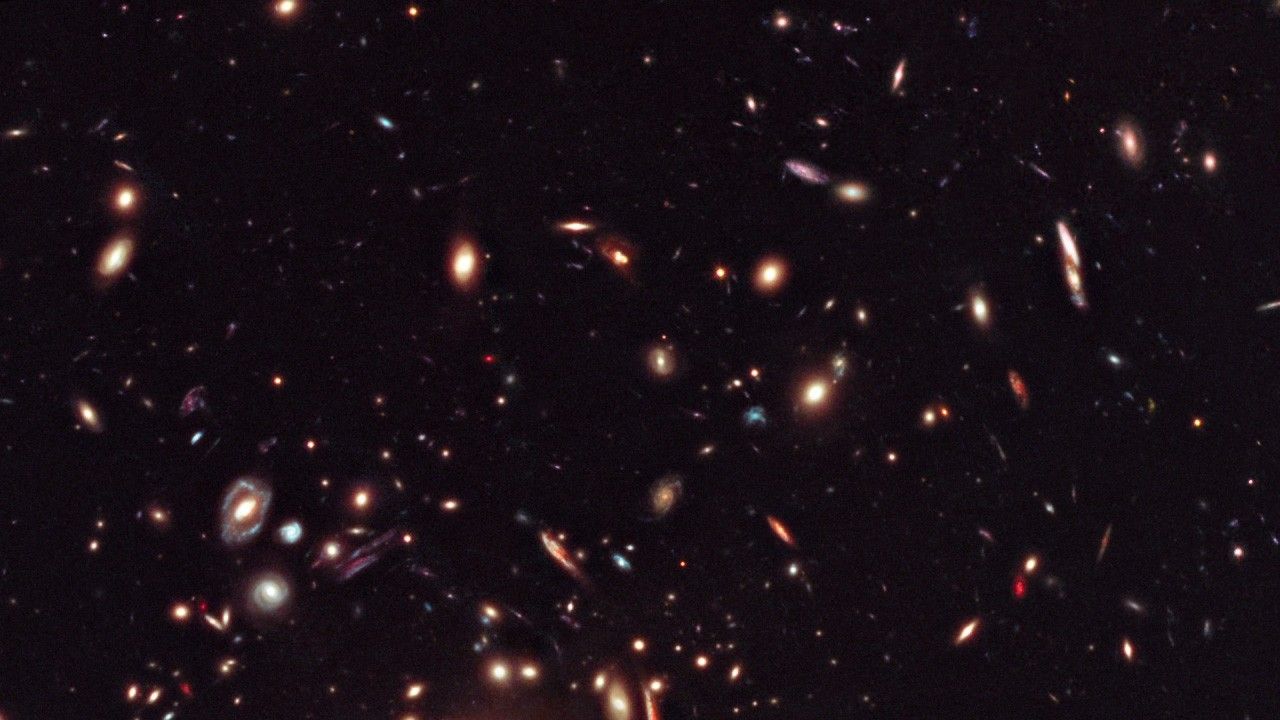1 min read
Gravitational Lens and Galaxy Cluster, MACS 1206

Four and a half billion light-years away in the constellation Virgo, scores of galaxies have been drawn together by the mutual gravitational pull. NASA's Hubble Space Telescope has peered at this galaxy cluster and gravitational lens, known as MACS 1206. Gravity from the cluster's immense mass bends the space around it, causing the images of more distant galaxies directly behind the cluster (that are within our line of sight) to be warped and cast into arc-like smears of light. The orange streak to the right of the image center is one such example of an optically distorted galaxy that resides millions of light-years behind MACS 1206. The circular pattern of smaller galaxy pieces is more evidence of gravitational lensing.
The central object in the cluster is a giant elliptical galaxy plump with billions of old, reddish suns, surrounded by a thinner halo of stars. Disk-shaped spiral galaxies appear, both edge- and face-on, showing a defined structure of arms encircling their central bulges. The bluer galaxies have stars actively forming within them and, consequently, host groups of young blue stars that contribute to their overall hue. In contrast, red galaxies – especially those elliptical galaxies like the center one – are more stable in their behavior, with very few little recent star formation.
About the Object
- R.A. PositionR.A. PositionRight ascension – analogous to longitude – is one component of an object's position.12h 6m 11.97s
- Dec. PositionDec. PositionDeclination – analogous to latitude – is one component of an object's position.-8° 48' 0.03"
- ConstellationConstellationOne of 88 recognized regions of the celestial sphere in which the object appears.Virgo
- DistanceDistanceThe physical distance from Earth to the astronomical object. Distances within our solar system are usually measured in Astronomical Units (AU). Distances between stars are usually measured in light-years. Interstellar distances can also be measured in parsecs.4.5 billion light-years (1.2 billion parsecs)
About the Data
- Data DescriptionData DescriptionProposal: A description of the observations, their scientific justification, and the links to the data available in the science archive.
Science Team: The astronomers who planned the observations and analyzed the data. "PI" refers to the Principal Investigator.This image was created from HST data from proposal 12069: M. Postman (STScI) et al. - InstrumentInstrumentThe science instrument used to produce the data.HST>ACS/WFC and HST>WFC3/IR
- Exposure DatesExposure DatesThe date(s) that the telescope made its observations and the total exposure time.April - July 2011, Exposure Time: 19 hours
- FiltersFiltersThe camera filters that were used in the science observations.ACS/WFC: F606W (V), F625W (r), ACS/WFC F775W (i), F814W (I), and F850LP (z) WFC3/IR: F105W (Y), F110W (YJ), F125W (J), F140W (JH), and F160W (H)
- Object NameObject NameA name or catalog number that astronomers use to identify an astronomical object.MACS J1206.2-0847, MACS 1206
- Object DescriptionObject DescriptionThe type of astronomical object.Galaxy Cluster
- Release DateOctober 13, 2011
- Science ReleaseAmbitious Hubble Survey Obtaining New Dark Matter Census
- Credit

This image is a composite of many separate exposures made by the ACS and WFC3 instruments on the Hubble Space Telescope using ten different filters. The color results from assigning different hues (colors) to each monochromatic image. In this case, the assigned colors are: Blue: ACS/WFC F606W (V) + F625W (r) Green: ACS/WFC F775W (i) + F814W (I) + F850LP (z) Red: WFC3/IR F105W (Y) + F110W (YJ) + F125W (J) + F140W (JH) + F160W (H)

Related Images & Videos

Galaxy Cluster MACS 1206
This image of galaxy cluster MACS J1206.2-0847 (or MACS 1206 for short) is part of a broad survey with NASA's Hubble Space Telescope. The distorted shapes in the cluster are distant galaxies from which the light is bent by the gravitational pull of an invisible material called...
Share
Details
Claire Andreoli
NASA’s Goddard Space Flight Center
Greenbelt, Maryland
claire.andreoli@nasa.gov






























